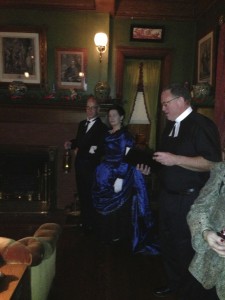As a painting and decorating contractor, we specialize in the historical restoration of the paint finishes of vintage buildings in the Chicago area. Many of the buildings we work on have not been designated as “historical landmarks” structures per se. However, their owners treat them as such. They view the preservation and beautification of their houses and buildings as part of their custodial responsibility. They are committed to do the right thing for their “piece of history”.
Building owners like these value the expertise and knowledge of professionals who can assist them in preserving their old houses. They would prefer to hold off for a while, rather than doing the wrong thing. Sometime, they are concerned about developing a more accurate and flattering color scheme and finishes. They are always concerned about preserving the original materials or authentically reproducing them when they cannot be saved. Longevity of the work performed is also very important to them. The trust they build in their service providers is critical.

Glessner House Christmas Fireplace Lighting Ceremony
One such owner has been our client for twelve years. Over twenty five years ago, they purchased an 1864 Victorian house in Chicago (survivor from the Great Chicago Fire) and completely renovated and restored it to its original splendor (and beyond). For this client, we have been their trusted custodians for the interior and exterior paint finishes, and wallcoverings. We just completed paint restoration to the elaborate mural in the powder room next to the kitchen. There were many nicks and an unsightly crack in a very visible spot on the mural. Now restored, the mural should be good for another twenty five years!
And then, there are those Chicago area buildings that are so extraordinary, they have been declared National Landmarks and turned into house museums or preserved for posterity in some other way. Such a building is the Glessner House on South Prairie in Chicago. When you have such stature, a building gets to have its own parties and commemorations. My wife and I attended such an event in early December. It commemorated the 125th anniversary of the first lighting of the house’s main fireplace. The evening was followed by dinner and a presentation by the house’s Curator on the life of Frances Glessner.
To us, working on such vintage buildings and historical homes is most satisfying and a true privilege. We look forward to working with clients who are such a friend to their “Old House”.








 Follow
Follow


